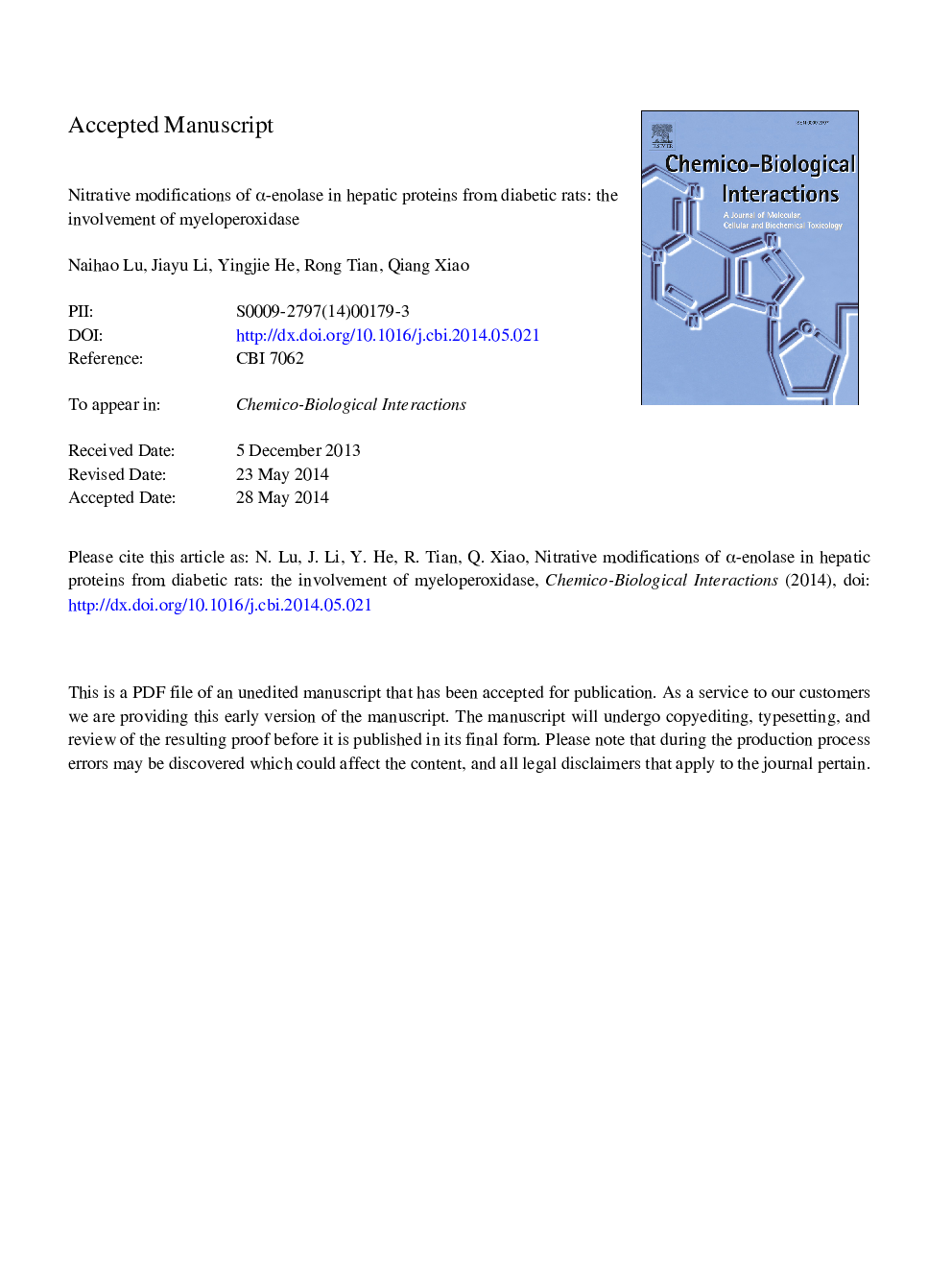| Article ID | Journal | Published Year | Pages | File Type |
|---|---|---|---|---|
| 5848012 | Chemico-Biological Interactions | 2014 | 35 Pages |
Abstract
Many studies reported that oxidative and nitrative stress might be important in the pathogenesis of diabetes and the development of its complications. In this study, we showed that α-enolase (EC 4.2.1.11, 2-phospho-d-glycerate hydrolase) was identified as the important target for oxidative and nitrative modifications in diabetic hepatic proteins. After 6 weeks of streptozotocin-administration, α-enolase expression and nitration were clearly increased in diabetic rat liver, whereas the enolase activity and oxidation status were not significantly changed in diabetic group. By means of immunoprecipitation and liquid chromatography-tandem mass spectrometry analysis, it was found that Tyr 12 and Tyr 257 of α-enolase were the most susceptible to nitration in diabetic rat liver. Moreover, myeloperoxidase (MPO) as a likely alternative mechanism for nitrative modification of α-enolase in vivo was apparently facilitated by the presence of higher MPO level and activity in diabetic liver, and fact that Tyr 12 and Tyr 191 of enolase was nitrated by MPO/nitrite/H2O2 system in vitro. Further studies in vitro indicated that carbonyl formation, rather than tyrosine nitration, might make a major contribution to the inactivation of enolase. The present results provided the new evidence for α-enolase as a susceptive target for MPO-catalyzed nitrative modification in diabetes. They also suggested a potential contribution of nitrative and oxidative modifications of enolase to an impaired glycolytic activity in diabetic hepatic injury.
Related Topics
Life Sciences
Environmental Science
Health, Toxicology and Mutagenesis
Authors
Naihao Lu, Jiayu Li, Yingjie He, Rong Tian, Qiang Xiao,
